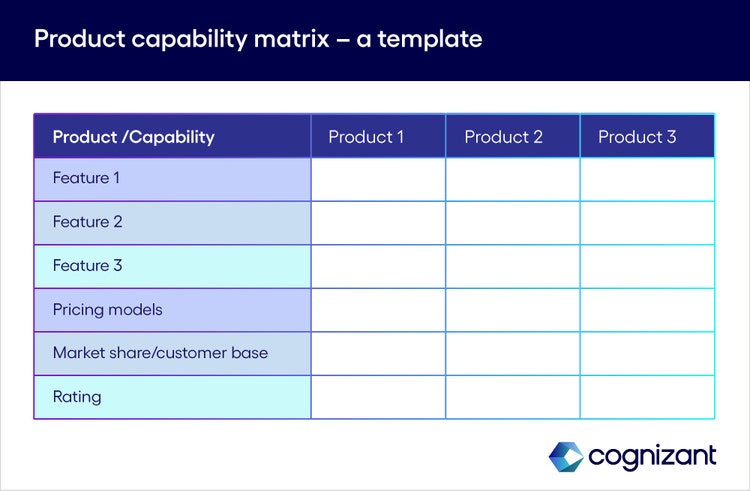
5 SaaS expense management mistakes – and how to avoid them styles-h2
<p><br> June 16, 2023</p>
5 SaaS expense management mistakes – and how to avoid them
<p><b>Businesses that lack a cohesive SaaS procurement plan are leaving money on the table.</b></p>
<p>Whether an organization is embarking on an extensive digital transformation journey or merely driving out cost, software as a service (SaaS) platforms offer a cost-effective alternative to a packaged software installation (which typically requires building a server, installing the application, and configuring it). SaaS platforms are easily accessible—all you need is an internet connection and a browser—and can be key enablers in process transformation, technology upgrades, and cost optimization.</p> <p>Small wonder, then, that a <a href="https://www.gartner.com/en/newsroom/press-releases/2022-10-31-gartner-forecasts-worldwide-public-cloud-end-user-spending-to-reach-nearly-600-billion-in-2023" target="_blank">recent Gartner report</a> sees growth of 16.8% in the SaaS market this year. That growth is attributed to speed, agility, flexibility, and affordability. On average, SaaS pricing ranges from $8.99 to $100+ per user.</p> <p>Hold everything, though. Gartner <a href="https://www.gartner.com/en/documents/3894124" target="_blank">also finds</a> that more than 30% of SaaS fees are wasted on features, subscriptions and licenses that aren’t used to their full potential. In other words, nearly a third of the average company’s SaaS spend could be allocated toward more productive activities.</p> <p>Why? Well, most enterprises implementing SaaS focus primarily on functional and technical capabilities, as well as unit-level cost. What they overlook is SaaS’s long-run financial impact; in some cases, this has led to high operational cost and low ROI.</p> <p>To address this, we’ll lay out common mistakes to avoid in order to optimize the ROI of SaaS.</p> <h5><i style="font-weight: normal;"><span class="text-bold-italic">1</span></i><span style="font-weight: normal;">. Accepting a non-negotiated rate</span></h5> <p>It’s common practice for an employee or department to subscribe to a SaaS platform using a corporate credit card. After that, new users are onboarded as required. All this results in paying a non-negotiated price. Thus, most organizations miss out on volume discounts that could save them 20% to 40%. It’s important to have a savvy procurement team that understands the SaaS market and can negotiate for the service, pricing and features while also working with business unit managers on licensing requirements, user onboarding, renewal, etc.</p> <h5><i style="font-weight: normal;"><span class="text-bold-italic">2</span></i>. <span style="font-weight: normal;">Wrong pricing model selection</span></h5> <p>Most SaaS platforms offer a tiered pricing model based on users, usage and features. In some cases, an individual user signs up for a subscription, and so enrolling in the basic plan may be sufficient. In other cases, however, the procurement team isn’t aware of the extent of future usage, and thus ends up selecting the wrong plan—which could be costly in the long run.</p> <h5><i style="font-weight: normal;"><span class="text-bold-italic">3</span></i>. <span style="font-weight: normal;"> Paying for unused licenses and features</span></h5> <p>Most SaaS platforms offer a simple user onboarding process; a user's name and email address are entered, and a role is assigned. It is common practice to distribute the license to multiple people, each of whom might use the product only once. In many cases, we see a large number of users who rarely access the platform—but whose usage is being paid for. Also, when employees resign, they remain active in the system. Because the SaaS license is per-user based, at the end of the month the organization finds itself paying for not only people who don’t use the application, but for those who’ve left the company.</p> <h5><i style="font-weight: normal;"><span class="text-bold-italic">4</span></i>. <span style="font-weight: normal;"> Enabling auto-renewal</span></h5> <p>SaaS users often pay via credit card, as noted, and providers typically enable the auto-renewal checkbox by default. This results in renewal at the end of the year without any negotiation. Additionally, the platform may increase pricing during that time; these changes often go unnoticed. Again, in cases like these, businesses are leaving money on the table by skipping an opportunity to negotiate.</p> <h5><i style="font-weight: normal;"><span class="text-bold-italic">5</span></i>. <span style="font-weight: normal;"> Insufficient ROI analysis</span></h5> <p>Many organizations calculate the average yearly cost of a SaaS subscription during the initial enrollment/approval stage. But a subscription service is an operating expense that may fluctuate depending on the license, usage, number of users, features, etc. Most organizations fail to factor in these variables when analyzing the ROI of the platform.</p> <h4>How to steer clear of these mistakes<br> </h4> <p>Now that you know these common errors, how do you avoid them? Many leading organizations create a governance model for procurement, onboarding, and usage reporting to mitigate the risks. Here are our recommendations:</p> <h5><i style="font-weight: normal;"><span class="text-bold-italic">1</span></i>. <span style="font-weight: normal;">Develop an effective product capability matrix</span></h5> <p>Before scouting for a SaaS platform, every organization should build a product capability matrix that tracks platform features against business workflows, user requirements, integrations, user experiences, and skillset required.<br> <br> This matrix will determine whether a platform meets business needs by providing the information shown here.</p> <ul> <li>Perform gap analysis</li> <li>Learn of any overlapping features</li> <li>List unique features</li> <li>Vendor’s market share and customer base</li> <li>List of all available pricing models</li> </ul>

#
<p><span class="small">Figure 1</span></p> <h5><span class="text-bold-italic">2</span>. <span style="font-weight: normal;">Identify the primary and secondary user bases</span></h5> <p>Every SaaS platform is aligned to a specific business operation such as sales, HR, marketing, or finance. Thus, for each platform, there is a primary set of daily users. But when analyzing offerings, don’t forget to also consider the smaller set of secondary users who will use the platform occasionally. Number of users is perhaps the single most important piece of data when negotiating subscription fees.</p> <h5><span class="text-bold-italic">3</span>. <span style="font-weight: normal;"> Evaluate market research and expert recommendations</span></h5> <p>In today's digital world, references and reviews are widely available. And virtually any SaaS platform will have been evaluated by consulting and research firms; it’s not difficult to find feature comparisons, market leaders, niche players, key competitors, and customer feedback. Organizations planning to invest in SaaS should leverage all available information.</p> <h5><span class="text-bold-italic">4</span>. <span style="font-weight: normal;"> Review platform usage and user engagement</span></h5> <p>Once an organization onboards a SaaS platform, the job of the procurement, finance, and respective department heads is not done. As an operating expense, SaaS requires regular ROI analysis. This must take into account license fees paid, platform feature usage, number of active users, average time spent, and platform performance.</p> <p>SaaS adoption will continue to increase as an alternative to developing customized solutions. This is inevitable because SaaS has so many advantages: low per-user cost, industry-matured solutions, scalability to accommodate business changes, and zero maintenance overhead.</p> <p>But maximizing the usefulness, while minimizing the cost, of SaaS is a challenge that most organizations are just beginning to consider. Individuals or departments tend to buy SaaS subscriptions in silos. This results in the purchase of multiple products for similar business processes, or the failure to nail down volume discounts. It’s important for organizations to holistically review the entire procurement process, draft guidelines and policies, and calculate the ROI.</p> <p>Avoiding spending mistakes via proper process and guidance will result in substantial cost savings and increased ROI for businesses using SaaS products.</p> <p><i>To learn more, visit the </i><a href="https://www.cognizant.com/us/en/services/cloud-solutions" target="_blank"><i>Cloud Solutions</i></a><i> section of our website or </i><a href="https://www.cognizant.com/us/en/services/cloud-solutions#contact-us" target="_blank"><i>contact us</i></a><i> to guide your SaaS platform governance model.</i></p> <p><i>This article was written by Rahul Bansode, Senior Manager in Cognizant’s Consulting practice and Ramona Balaratnam, Thought Leadership Strategist in Cognizant Research.</i></p>
<p>We’re here to offer you practical and unique solutions to today’s most pressing technology challenges. Across industries and markets, get inspired today for success tomorrow.</p>
